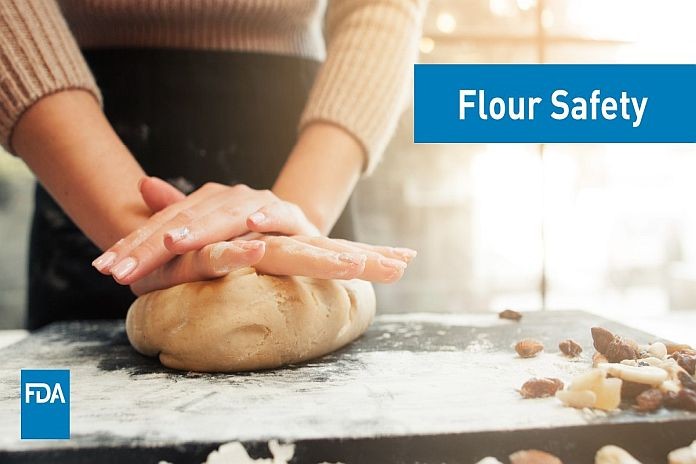SILVER SPRING, USA – As Thanksgiving approaches, the US Food and Drug Administration (FDA) shares information on how to safely handle flour while cooking and baking. Learn more about flour and best practices for safe flour handling so that you and your family can focus on what matters most this time of the year.
What to know about flour
As an everyday household staple, flour is commonly used for baking and cooking foods. Flour is a raw powder made by processing raw grains grown in fields. However, this process does not kill bacteria typically found among foods grown outdoors, which include Salmonella and pathogenic E. coli. There have been several cases in the United States of foodborne illness, also known as food poisoning, that involved raw flour or raw flour-containing products like cake mixes and cookie dough.
Consuming raw food can result in food-related illnesses, with symptoms ranging from mild discomfort to very serious, life-threatening illness. Keep yourself and your family safe and healthy this Thanksgiving by practicing safe flour handling.
Do’s and Don’ts for handling flour safely
Some of your favorite Thanksgiving recipes may include flour. Just in time for the coming fall festivities, the FDA recommends this list of Do’s and Don’ts to help you and your family safely handle flour.
Do’s
- Follow directions on baking mix packages and other flour-containing products for the correct cooking times and optimal cooking temperature.
- Keep flour separated from ready-to-eat foods to avoid accidentally consuming raw flour.
- Refrigerate cookie and pastry dough as stated by their package directions. Use a refrigerator thermometer to ensure your appliance is at a safe temperature of 40°F or below for raw food storage.
- Thoroughly clean your hands with soap and running water after handling raw flour and foods that contain raw flour. Also, clean your cooking utensils, countertops, and supplies (bowls, baking pans, cutting boards, etc.) with warm, soapy water.
Don’ts
- Don’t eat or taste raw dough products or baking mix. The flour within the food products may contain bacteria that could make you sick.
- Don’t allow raw dough products to be used as crafts or play clay. Young children often put their hands in their mouths, which could introduce harmful bacteria from raw dough into their bodies and make them sick.
- Don’t use products that contain raw flour, like cake mix or raw batter, to make or consume ready-to-eat products, like milkshakes or ice cream.
Review the FDA’s complete list of Do’s and Don’ts of Handling Flour for more steps you can take to handle flour safely.
For more information on safe food handling, visit. This resource provides four simple steps that can help keep you and your family safe from food-related illnesses.





